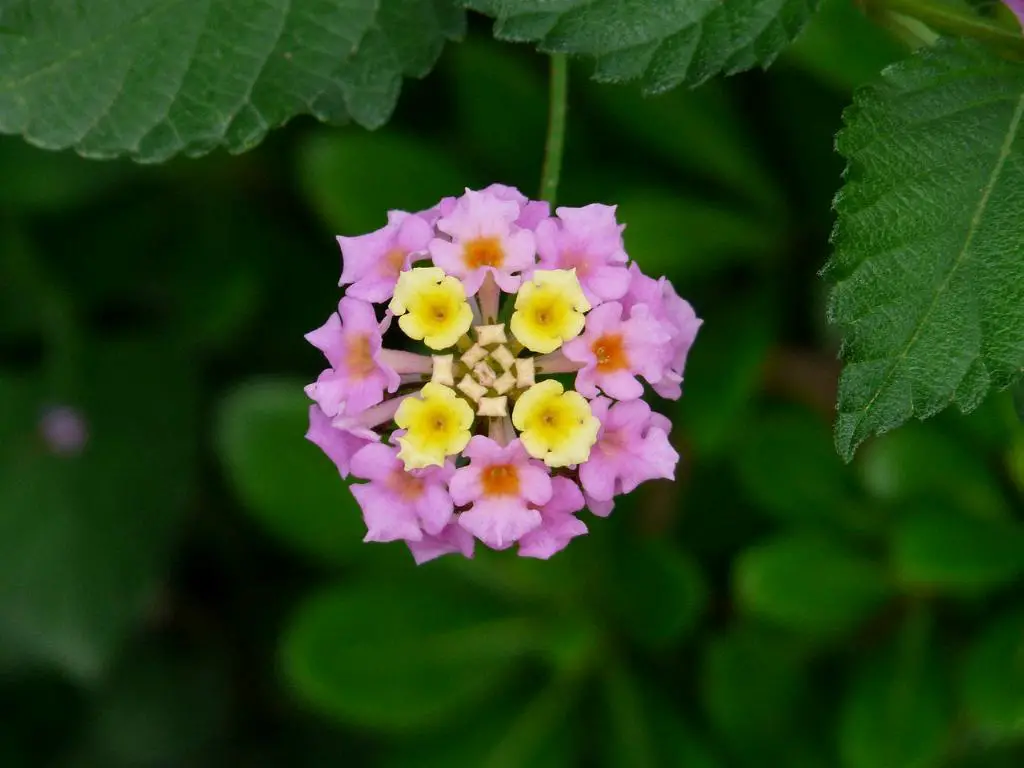Trailing Lantana, a species known for its cascading growth and vibrant flowers, has captivated garden enthusiasts and landscape designers alike. This plant, scientifically referred to as Lantana montevidensis, brings a pop of color with shades ranging from purple and pink to white and even bi-color varieties. Its ability to thrive under various conditions and the minimal care required makes it a popular choice for both newbie gardeners and seasoned green thumbs. Understanding the nature and demands of trailing lantana not only enhances the visual appeal of gardens but also ensures that this hardy perennial reaches its full potential, draped elegantly over walls or spreading cheerfully across garden beds.
Unpacking the Growth Habits of Trailing Lantana
If you’re curious about how trailing lantana grows, you’ll find that its spreading nature is quite fascinating. Unlike its upright relatives, this variety is known for its ability to sprawl across the ground, creating a thick mat that covers extensive areas. This creeping growth habit makes it ideal for use as ground cover, in hanging baskets, or over garden structures where it can elegantly cascade. The branches of trailing lantana can stretch up to 5 feet, depending on the growing conditions, each branch dotted liberally with clusters of tiny, vibrant flowers that attract a host of pollinators including butterflies and bees.
Ideal Growing Conditions for Thriving Trailing Lantana
For your trailing lantana to really thrive, giving it the right growing conditions is crucial. This plant loves the sun, and planting it in a spot that gets at least six hours of direct sunlight a day will ensure it blooms profusely. While it can tolerate partial shade, too much shade can reduce its blooms and make the plant leggy. Trailing lantana is not too picky about soil – any well-draining type will do, as long as it’s not too rich; overly fertile soil can lead to fewer flowers and more foliage. Maintaining a balance in watering is key – moist but not waterlogged soil is ideal. Once established, trailing lantana is drought tolerant, making it a low-maintenance option for dry gardens.
Step-by-Step Guide to Planting and Caring for Trailing Lantana
Planting and caring for trailing lantana is quite straightforward. Begin by choosing a sunny spot in your garden or in a container with adequate drainage holes. When planting, mix in a bit of compost with your native soil to improve its structure and water retention, but remember to keep the soil light and not too nutrient-rich. Plant the lantanas about 12 inches apart to give them room to spread. Water the plants regularly until they’re established, and then you can reduce the frequency, especially if rainfall is adequate. Trimming back the plant after the first flush of flowers can encourage a second bloom and help maintain its shape. Additionally, a light application of a balanced fertilizer in early spring can promote vigorous growth and flowering.
Common Challenges and Effective Solutions in Trailing Lantana Cultivation
While generally robust, trailing lantana can face a few challenges such as pest infestations and fungal diseases, particularly in humid climates. To combat these, ensure proper air circulation by not overcrowding plants and keeping the foliage dry when watering. Treat infestations of pests like whiteflies and aphids with insecticidal soap or neem oil. If root rot becomes an issue due to overwatering, reduce the watering schedule and improve soil drainage. Regular monitoring and early intervention can keep most of these problems at bay, securing the health and beauty of your trailing lantana.
Creative Landscaping Ideas Featuring Trailing Lantana
Trailing lantana’s versatility makes it perfect for various landscaping projects. Imagine this vibrant plant spilling gracefully over retaining walls or encircling a garden fountain. Its dense growth can also help control erosion on slopes or add a burst of color to rock gardens. For a more structured look, use trailing lantana to outline garden paths or borders, creating a charming, flowery frame for your garden walkways. Mixing different colors of trailing lantana can yield a stunning visual impact, playing with hues that complement or contrast with other plants in your garden.
Incorporating Trailing Lantana into Eco-Friendly Gardens
Echoing the growing trend towards sustainability, incorporating trailing lantana in eco-friendly gardens can be a smart choice. Its drought resistance makes it suitable for xeriscaping, reducing the need for frequent watering. Moreover, its attractiveness to butterflies and bees enhances biodiversity, supporting local ecosystems. Planting trailing lantana can also provide natural pest control as part of an integrated pest management strategy, thus reducing the need for chemical interventions.
Understanding the Environmental Impact of Trailing Lantana
While trailing lantana is an asset to many gardens, it’s essential to consider its environmental impact. In some regions, it’s regarded as an invasive species capable of displacing native flora. Responsible gardening involves ensuring that it does not spread uncontrollably, especially in areas close to natural reserves or ecosystems. Strategies such as trimming the plants regularly to prevent seeding and choosing sterile cultivars can help mitigate the risk of invasive spread.
Comparison of Trailing Lantana with Other Lantana Varieties
In comparison to other lantana species, trailing lantana stands out for its ground-covering ability and low-maintenance nature. While the common lantana (Lantana camara) grows in more bush-like forms and can reach several feet high, trailing lantana remains close to the ground, making it ideal for different landscaping applications. Each variety has its unique appeal and best use scenario, depending on the garden’s design and functional needs.

